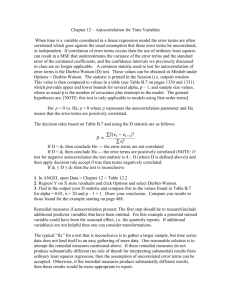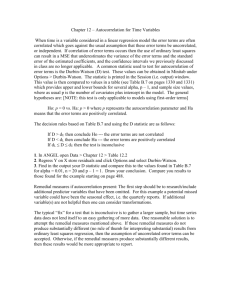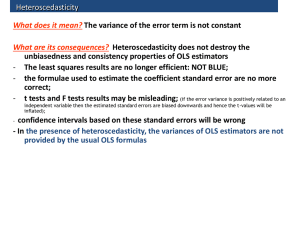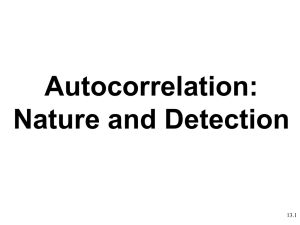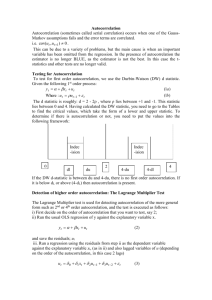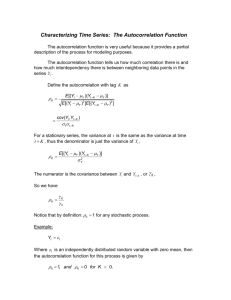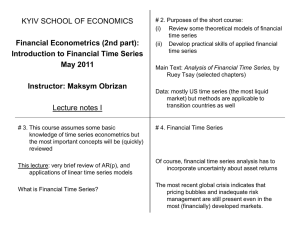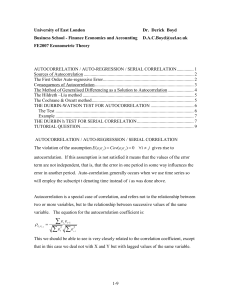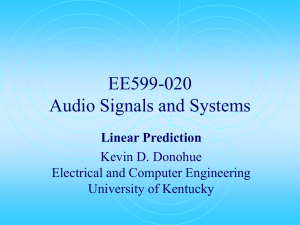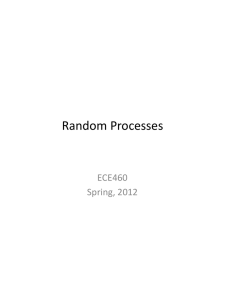Test for AR
advertisement
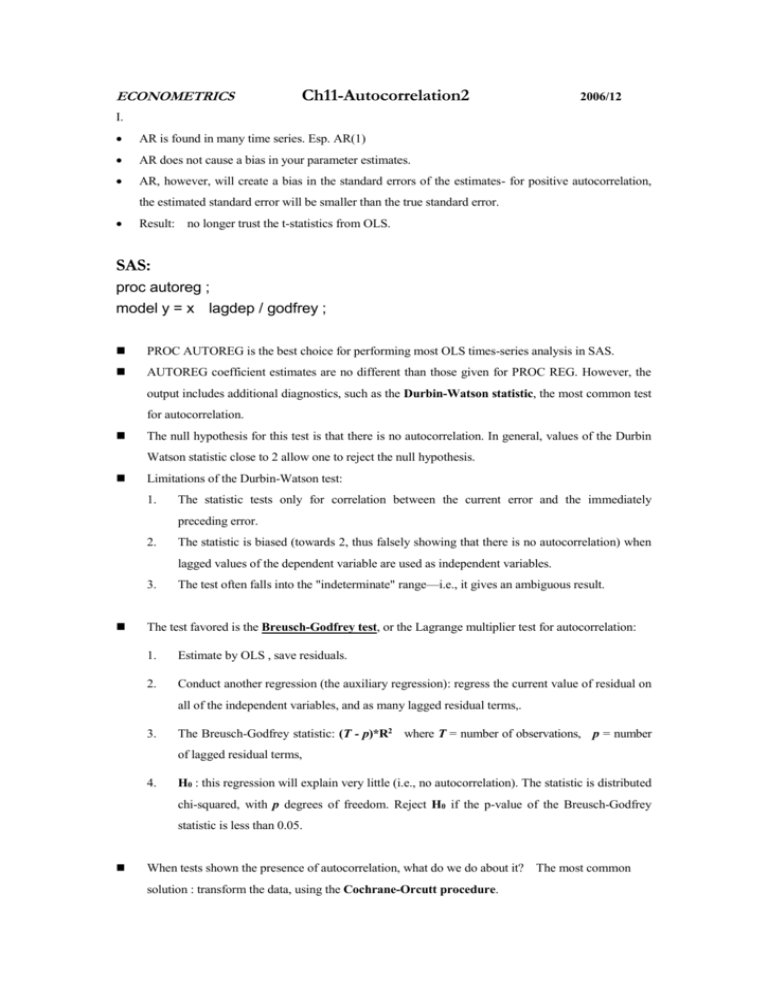
ECONOMETRICS Ch11-Autocorrelation2 2006/12 I. AR is found in many time series. Esp. AR(1) AR does not cause a bias in your parameter estimates. AR, however, will create a bias in the standard errors of the estimates- for positive autocorrelation, the estimated standard error will be smaller than the true standard error. Result: no longer trust the t-statistics from OLS. SAS: proc autoreg ; model y = x lagdep / godfrey ; PROC AUTOREG is the best choice for performing most OLS times-series analysis in SAS. AUTOREG coefficient estimates are no different than those given for PROC REG. However, the output includes additional diagnostics, such as the Durbin-Watson statistic, the most common test for autocorrelation. The null hypothesis for this test is that there is no autocorrelation. In general, values of the Durbin Watson statistic close to 2 allow one to reject the null hypothesis. Limitations of the Durbin-Watson test: 1. The statistic tests only for correlation between the current error and the immediately preceding error. 2. The statistic is biased (towards 2, thus falsely showing that there is no autocorrelation) when lagged values of the dependent variable are used as independent variables. 3. The test often falls into the "indeterminate" range—i.e., it gives an ambiguous result. The test favored is the Breusch-Godfrey test, or the Lagrange multiplier test for autocorrelation: 1. Estimate by OLS , save residuals. 2. Conduct another regression (the auxiliary regression): regress the current value of residual on all of the independent variables, and as many lagged residual terms,. 3. The Breusch-Godfrey statistic: (T - p)*R2 where T = number of observations, p = number of lagged residual terms, 4. H0 : this regression will explain very little (i.e., no autocorrelation). The statistic is distributed chi-squared, with p degrees of freedom. Reject H0 if the p-value of the Breusch-Godfrey statistic is less than 0.05. When tests shown the presence of autocorrelation, what do we do about it? The most common solution : transform the data, using the Cochrane-Orcutt procedure. If model misspecified. On encountering autocorrelation, then, respecify model.--relationship between your dependent and independent variables. It often happens that autocorrelation vanishes when dynamics (i.e., lagged values) are introduced in a time series model. By this is meant that lagged values of the dependent or one or more independent variables are included as independent variables. Semi-log model (p139) and a polynomial model (p214). SAS: DATA AR; /* transforming data */ ; lt=log(time); time2=time**2; fp1=lag1(pop); lfp=log(pop); lfp1=lag1(lfp); /* different specification */ ; proc autoreg data=AR; model pop=time/godfrey; model pop=time time2/godfrey; model pop=lt/godfrey; model pop=fp1/godfrey; model lfp=time/godfrey; model lfp=lfp1/godfrey; Which model would you choose? Have you eliminated your problem with autocorrelation? If respecification is unsuccessful, a corrected estimate of the standard error will correct for the main problem in autocorrelation: unreliable t-statistics. the Newey-West autocorrelation consistent covariance matrix.
